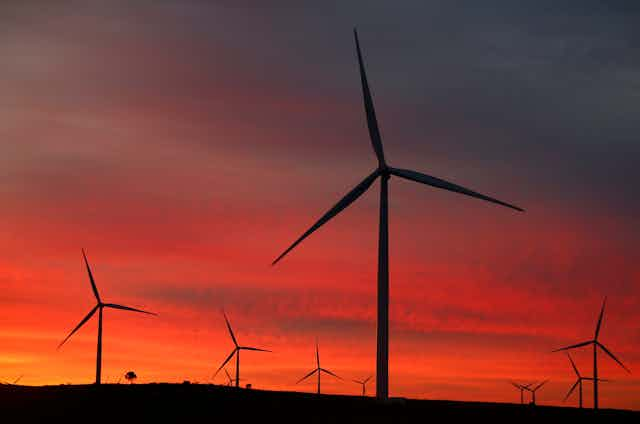The federal Labor Party has sought to simplify its climate change policy. Any suggestion of expanding the Renewable Energy Target has been dropped. But there is debate over whether the new policy is actually any more straightforward as a result.
One thing Labor did confirm is its support for an emissions intensity scheme (EIS) as its central climate change policy for the electricity sector. This adds clarity to the position the party took to the 2016 election and could conceivably remove the need for a prescribed renewable energy target anyway.
An EIS effectively gives electricity generators a limit on how much carbon dioxide they can emit for each unit of electricity they produce. Power stations that exceed the baseline have to buy permits for the extra CO₂ they emit. Power stations with emissions intensities below the baseline create permits that they can sell.
An EIS increases the cost of producing electricity from emissions-intensive sources such as coal generation, while reducing the relative cost of less polluting energy sources such as renewables. The theory is that this cost differential will help to drive a switch from high-emission to low-emission sources of electricity.
The pros and cons of an EIS, compared with other forms of carbon pricing, have been debated for years. But two things are clear.
First, an EIS with bipartisan support would provide the stable carbon policy that the electricity sector needs. The sector would be able to invest with more confidence, thus contributing to security of supply into the future.
Second, an EIS would limit the upward pressure on electricity prices, for the time being at least.
These reasons explain why there was a brief groundswell of bipartisan support for an EIS in 2016, until the Turnbull government explicitly ruled it out in December.
Moving targets
Another consideration is whether, with the right policy, there will be any need for firm renewable energy targets. This may help to explain Labor’s decision to rule out enlarging the existing scheme or extending it beyond 2020.
If we had a clear policy to reduce emissions at lowest cost, whether in the form of an EIS or some other scheme, renewable energy would naturally increase to whatever level is most economically efficient under those policy settings. Whether this reaches 50% or any other level would be determined by the overall emissions-reduction target and the relative costs of various green energy technologies.
In this scenario, a separately mandated renewable energy target would be simply unnecessary and would probably just add costs with no extra environmental benefit. Note that this reasoning would apply to state-based renewable energy policies, which have become a political football amid South Australia’s recent tribulations over energy security.
An EIS is also “technology agnostic”: power companies would be free to pursue whatever technology makes the most economic sense to them. Prime Minister Malcolm Turnbull explicitly endorsed this idea earlier this month.
Finally, an EIS would integrate well with the National Electricity Market, a priority endorsed by the COAG Energy Council of federal, state and territory energy ministers. State and territory governments may find this an attractive, nationally consistent alternative that they could support.
Strengths and weaknesses
A 2016 Grattan Institute report found that an EIS could be a practical step on a pathway from the current policy mess towards a credible energy policy. Yet an EIS has its weaknesses, and some of Labor’s reported claims for such a scheme will be tested.
In the short term, electricity prices would indeed rise, although not as much as under a cap-and-trade carbon scheme. It is naive to expect that any emissions-reduction target (either the Coalition’s 26-28% or Labor’s 45%) can be met without higher electricity costs.
Another difficulty Labor will have to confront is that setting the initial emission intensity baseline and future reductions would be tricky. The verdict of the Finkel Review, which is assessing the security of the national electricity market under climate change policies, will also be crucial.
Despite media reports to the contrary, Chief Scientist Alan Finkel and his panel have not recommended an EIS. Their preliminary report drew on earlier reports noting the advantages of an EIS over an extended renewable energy target or regulated closure of fossil-fuelled power stations, but also the fact that cap-and-trade would be cheaper to implement.
Labor has this week moved towards a credible climate change policy, although it still has work to do and its 45% emissions-reduction target will still be criticised as too ambitious. Meanwhile, we’re unlikely to know the Coalition government’s full policy until after it completes the 2017 Climate Change Policy Review and receives the Finkel Review’s final report.
Australians can only hope that we are starting to see the beginnings of the common policy ground that investors and electricity consumers alike so urgently need.

